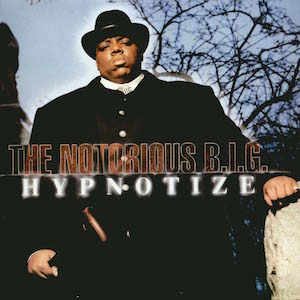Biggie Smalls Last Album
Yeah You're now entering the mode of the Notorious Biggie Smalls Junior M.A.F.I.A.
A succession of hits, no matter their individual success, does not make an album. An album is meant to tell a story. Not necessarily in a literal sense—though, it certainly can—but in that every good album has a beginning, middle and end, and that as a whole it’s more than the sum of its parts.
Much of this is done through sequencing, which can make or break an album, no matter the individual quality of its tracks. Few albums in hip-hop history make a stronger argument for this case than The Notorious B.I.G.’s Life After Death. At first glance, Life After Death shouldn’t work.

It’s 24 tracks deep, and that’s not even counting a multitude of skits peppered between those two dozen songs. Despite having some genuinely great material on their double-disc extravaganzas, neither JAY-Z nor Nas could pull off that kind of excess. Yet, Biggie did.
And he did it with style. The Beginning The introduction on Life After Death picks up where Biggie last left us on the outro to Ready to Die, with his suicide still ringing in our ears as he’s being rushed to the emergency room. Puffy is lamenting his demise as we hear dramatic piano keys give way to falling raindrops.


The sound of Big’s heart rate monitor flatlining, a signal he is experiencing cardiac arrest, is still fading as the first beat on the album kicks in. Arguably the darkest song in his entire discography, “Somebody’s Gotta Die” details Biggie hearing about how his friend C-Rock just got shot by a guy named Jason, and how he plans his revenge.
Biggie Albums In Order
With the supreme eye for detail that made him such a master of storytelling, Biggie lavishes specific details that make the listener envision the scene: the dogs barking, the blood on the sneakers of the friend giving him the bad news, how he knows him from slinging on the 16th floor. Add to that Biggie’s real-life sudden death, which preceded the album’s release by a mere two weeks. As his funeral parade was slowly rolling through the crowded streets of Brooklyn, the freshly pressed discs were already stacked high in record distribution centers all over the world. Hearing the tragedy of Life After Death’s opening unfold while Biggie’s actual death was still being processed by family, friends, and fans, puts the album in a light wholly devoid of, well, light. The storytelling at work on “Somebody’s Gotta Die” is astonishingly beautiful to behold, but damn. How do you keep the momentum going after you’ve just killed off your main character?
How do you pull your audience back from the abyss after such a torrent of utter darkness? How does this not stop the whole arch of the album dead in its tracks already? The answer: “Hypnotize.”.